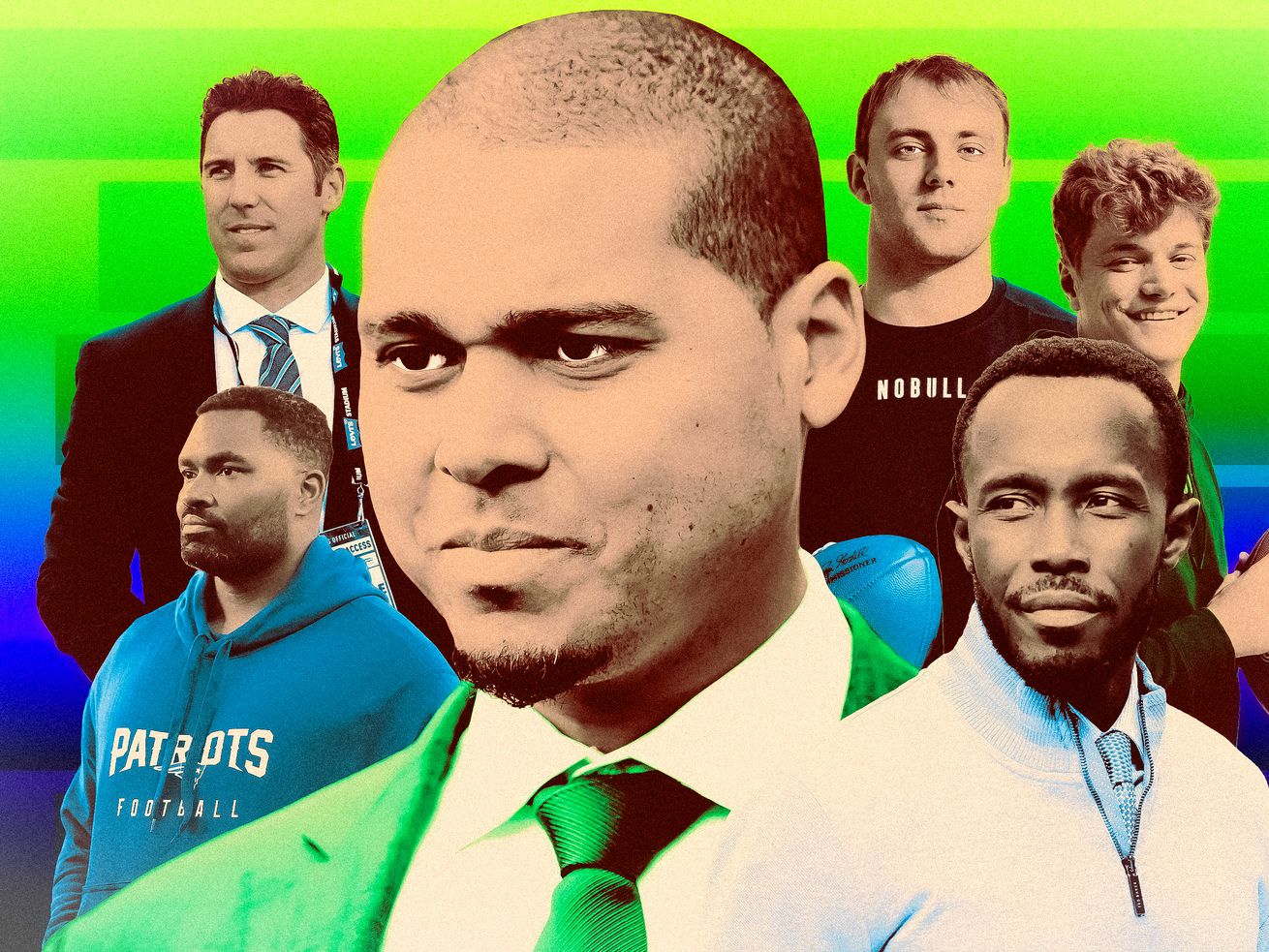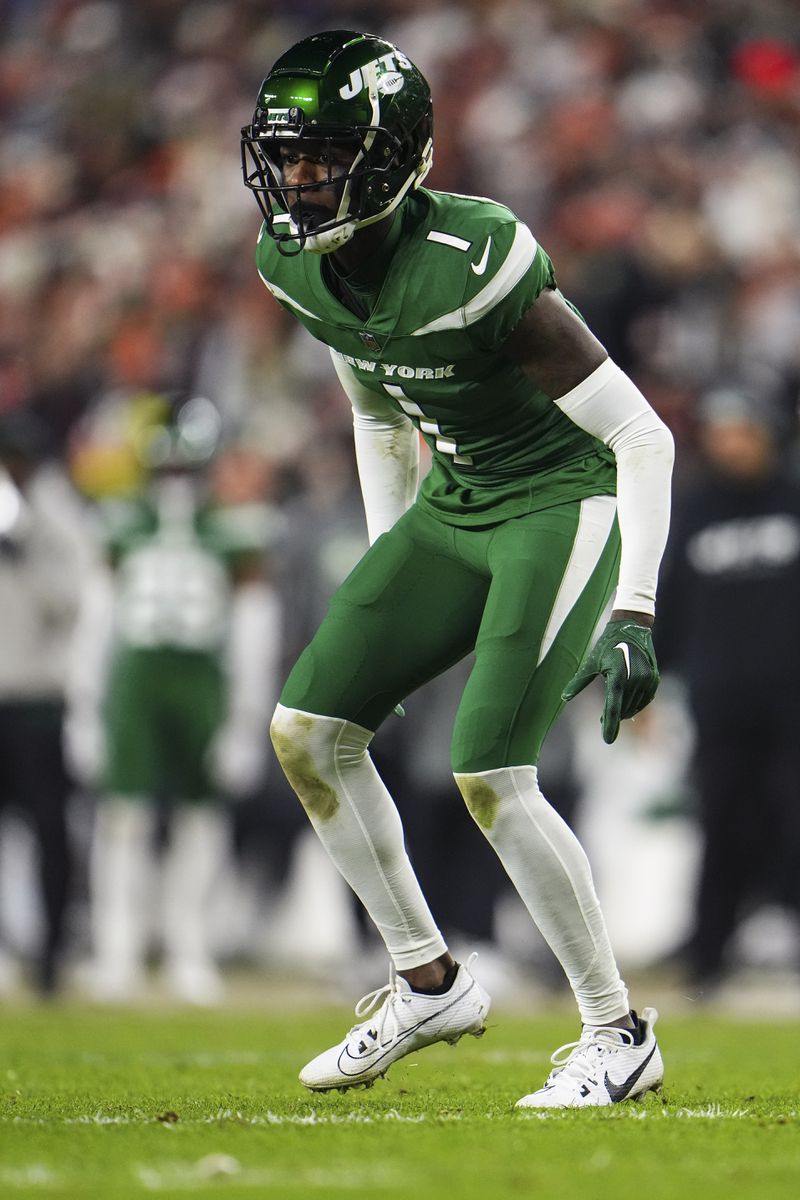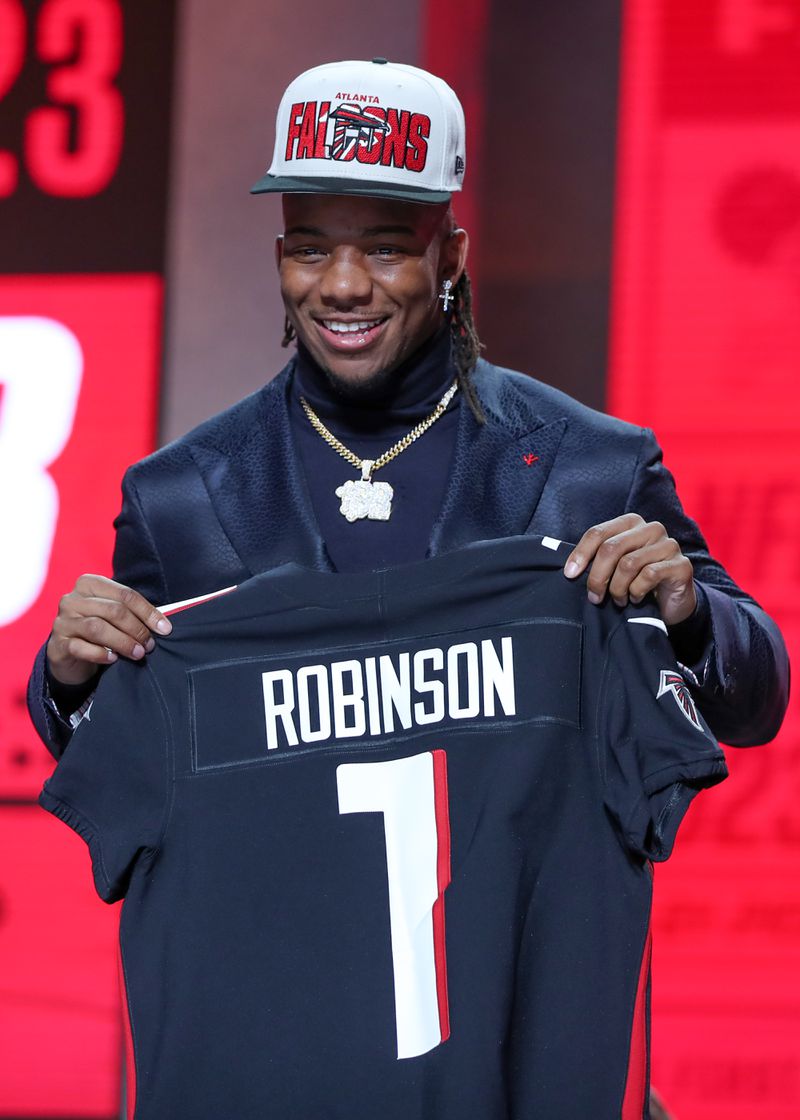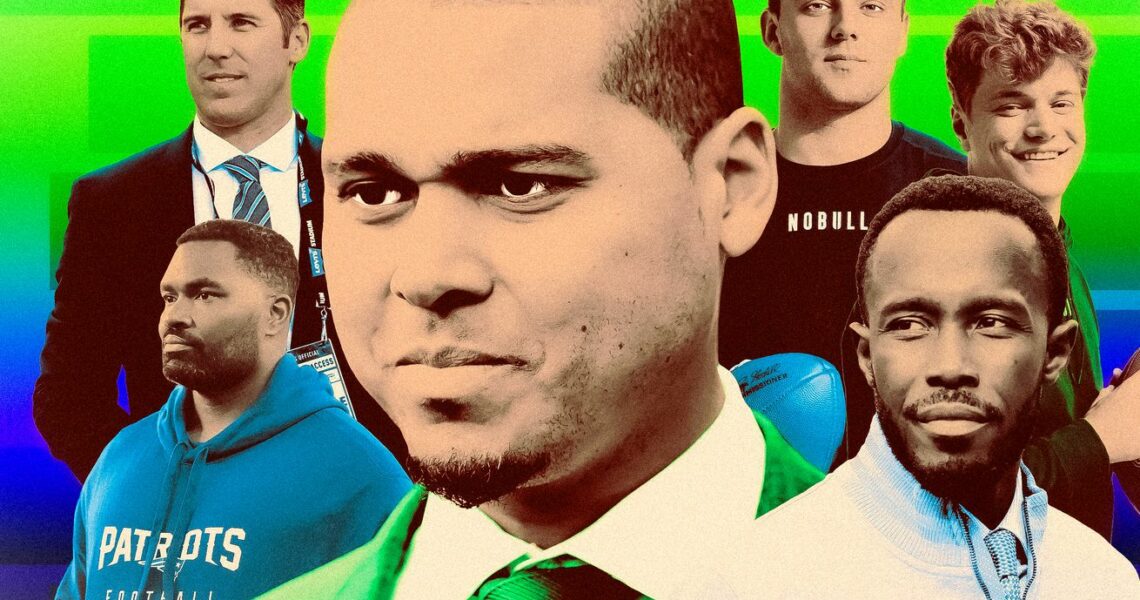
Drafting is hard! But smart NFL general managers can help their teams’ chances if they follow these handy rules.
There’s no better time to be a general manager than right after the NFL draft. They’re almost always convinced that they’ve crushed it. They feel good about the process, are confident that they’ve outperformed their rivals, and can easily envision this class forming the foundation of a world-class roster.
Then, two or three years later, we all (most of the time, anyway) look back on those same general managers with the same disbelief: How did they pass on THIS guy for THAT guy? What a moron!
The point is that the NFL draft is hard. Even the great draft classes will include some mistakes. That’s just part of the deal. Teams have more resources now than ever before, yet the hit rate on prospects hasn’t really improved.
It’d be great if I could write a column about how to nail the NFL draft, but my terrible takes are well documented. What I can do, though, is offer some advice on how to avoid the obvious mistakes—the gaffes that general managers should steer clear of if they want to keep their jobs.
With that in mind, I present the six traps for teams to avoid to give themselves a chance of success in the NFL draft.
Stats are courtesy of TruMedia and Stathead unless otherwise noted.
1. The “We Know Ball” Trap
Overrating one’s ability to evaluate talent.
The premise here is simple: Teams should factor in the inherent uncertainty involved in drafting college prospects. We love to romanticize the scouting process—the old-school football guy sitting in a dark room and rewinding the film of one play over and over again until they finally see something that no one else can. But we all know that’s not actually how it works, right?
All 32 NFL teams have access to the same college film and the same athletic testing data from the combine and pro days. They can all go to the Senior Bowl and see prospects up close if they want to. They’re all allowed to bring in 30 prospects for visits at their team facilities. General managers don’t gain an edge because they have some “eye for talent” gene. Their job is to gather information from a variety of perspectives—scouting, analytics, coaching, the medical staff—and then paint as complete a picture as possible for each prospect. When it comes time to make a decision, they should embrace, not reject, the uncertainty. They’re weighing a number of factors—positional value, a player’s upside, team needs—and essentially placing a bet. And some of those bets will lose.
We have countless examples that show us how hard it is to evaluate college prospects. Nine players were selected ahead of Patrick Mahomes. Twelve players were selected ahead of Aaron Donald. Tom Brady, as you may have heard, was picked 199th overall. That doesn’t mean teams should just throw their hands up and flip a coin when it’s their turn to pick. But the best organizations operate with the understanding that they are making decisions in an uncertain environment. They take in all the information, make decisions that they feel good about, and try to reassess their process every year. The bad organizations operate with the false confidence that they have an imaginary edge in identifying talent.
2. The “This Guy’s Different” Trap
Ignoring historical evidence to justify a selection.
We have pretty compelling evidence to suggest that evaluating tight end prospects is especially challenging. Nine tight ends have been selected in the first round of the past 10 drafts. Those players have combined for zero All-Pro nods and one 1,000-yard season. Only one—David Njoku of the Cleveland Browns—got a second contract from the team that drafted him (it could still happen with Kyle Pitts and Dalton Kincaid; their rookie contracts aren’t up yet). But we can go back even further. The last time a team used a first-round pick on a tight end who would go on to become an All-Pro was 2003 (Dallas Clark, who was an All-Pro in 2009). Since 1990, there have been only three All-Pro tight ends taken in the first round—Tony Gonzalez, Jeremy Shockey, and Clark.
Yet every draft season, we can’t help it. We convince ourselves that the next tight end prospect will be the exception. We’re seeing it this year with Georgia’s Brock Bowers. Let me be clear: I like Bowers! Fun player, breaks tackles, YAC monster. I hope he has a long, fruitful career in the NFL. But if I were a GM, I would acknowledge that the entire league has had trouble identifying who the best tight end is in any given draft class for the past 30-plus years. I would be hesitant to take Bowers with a high first-round pick, even while acknowledging that he could be the one that hits. Again, the draft is about making smart bets. And we have a long history that tells us betting on a tight end early does not yield the same upside as other positions. For the most part, the best players at the position have been taken later in the draft (Travis Kelce in the third round, George Kittle in the fifth, Mark Andrews in the third).
The bottom line is that you have to be careful about drafting players whom you believe will be exceptions. The tight end thing is just one example. But there could be other things too, like ignoring a corner’s arm length or a wide receiver’s 40 time, which might fall below the fifth percentile of what we typically see from those positions. I’m not saying that you should never take those guys. But if history tells us that a prospect with a specific physical or production profile doesn’t typically succeed, you need to have a really good explanation for why the next guy will be the exception. And even then, the juice might not be worth the squeeze. You’ll miss out on some good players, no doubt. But you’ll also probably be making higher-percentage bets.

Photo by Cooper Neill/Getty Images
3. The Plug-and-Play Trap
Overrating the possibility that a prospect will make an immediate impact.
In the days before and after the draft, you’ll hear pretty much every general manager talk about how they don’t draft for need. This is partly true and partly a lie. Every team drafts for need at least a little bit. The Kansas City Chiefs, for example, won’t take a quarterback in the first round, even if they love a guy’s potential, because they have Mahomes on their roster. The same idea extends to other players and areas of the roster. Now that I’ve said that, generally speaking, the smart general managers avoid the urge to make a pick just because it immediately fills a hole on the roster. Needs can change quickly. A veteran player a team feels great about can get injured or have a decline in performance or demand a trade, and all of a sudden, a new need surfaces out of nowhere.
But general managers are only human. They look at a “plug-and-play” prospect and can’t help but be lured by the appeal of having someone who can make an immediate impact. They also have to think about their own job security. Sure, it’s easy for some clown on the internet (that’s me!) to talk about not drafting for need. But who do you think gets blamed if a first-round pick doesn’t play right away? The GM who picked the guy.
After the draft, we’ll all comb through depth charts and assume that teams will be fine in certain areas because they used the draft to fill a need. But the truth is that’s usually not the case. If we look at the past five seasons, we find that just 37.2 percent of drafted rookies played at least 300 snaps (17 snaps per game). That means more than 62 percent of drafted rookies played fewer than that number. And by the way, this is just about getting on the field; we’re not even discussing whether the rookies played at a competent or above-average level. If we included those filters, the number (37.2 percent) would shrink even more.
The point is that being a rookie in the NFL is hard. Players like Jets cornerback Sauce Gardner and Dallas edge rusher Micah Parsons, who immediately became among the best players in the league at their positions, are major exceptions. Most of the time, if you pick a prospect because you’re convinced he can be a serious contributor from day one, you’ll be disappointed.
4. The C.J. Stroud–Puka Nacua Trap
Looking at rookies from the previous year’s class and thinking you’ll get this year’s version of those players.
There’s nothing the NFL likes more than a little recency bias. When it comes to the favorite pastimes of GMs and coaches, it’s right up there with sleeping in the office or punting on fourth down. And recency bias rears its ugly head quite a bit during the draft. Let’s use Texans quarterback C.J. Stroud and Rams receiver Puka Nacua as examples. Stroud was incredible last season. Legitimately one of the most impressive showings for a rookie quarterback I’ve ever seen. He ranked seventh in expected points added per pass play and ninth in dropback success rate among all starters.
When you watch the draft next week, you’ll hear an analyst (or a fan base) compare a 2024 quarterback prospect like Caleb Williams to Stroud. I like Williams. Can’t wait to watch him play next season. But the odds that he’ll perform at a level similar to Stroud’s as a rookie are extremely low. Since 2000, there have been 56 rookie quarterbacks who have had at least 300 dropbacks. Among that group, Stroud ranked eighth (the 86th percentile) in EPA per pass play. If we narrow it down to just first-round picks, he is sixth out of 42 (still the 86th percentile). Even if we do just players picked in the top five, he’s fourth out of 24 (83rd percentile). This is not perfect or complex math, but hopefully you get what I’m saying. Something like four out of five quarterbacks taken in the top five in the next few seasons should be expected to perform worse than Stroud did last season. It’s a high bar to clear. Could Williams be the exception? Sure! Is it the most likely outcome? Of course not.
It’s the same deal with Nacua. He had an incredible rookie season, catching 105 balls for 1,486 yards. The Rams got an absolute steal, drafting him in the fifth round with the 177th overall pick (another reminder that prospect evaluation is hard!). On day three of this year’s draft, you’ll hear a lot of talk about who the 2024 version of Nacua might be. But the most likely outcome is that there isn’t anybody that will come even remotely close to matching Nacua’s production. He had 574 more yards than any other day-three rookie from the past five seasons. The average rookie season for a day-three wide receiver drafted in the past five years is 16.4 catches for 203.4 yards.
The idea also extends to the early rounds. For every Ja’Marr Chase or Justin Jefferson, there is a receiver who was disappointing. The average production for a wide receiver taken in the first or second round over the past five years is 45.7 catches for 601.8 yards. Just six of the 51 (11.8 percent) had at least 1,000 yards as a rookie.
We’ll get some great rookie performances in 2024. The problem is that it’s pretty much impossible to predict which prospects will deliver them. Teams shouldn’t let their judgment be clouded by the recent outlier performances.
5. The “LOL College Coaches” Trap
Operating under the assumption that your coaching staff will be able to get more out of a prospect than his college coaches could.
NFL head coaches will fill their staff with their kids and their old buddies and then wonder why they’re struggling to develop young players. And they love to clown college coaches for not getting these players ready for the NFL. Those college-level coaches could never compete at this level. Just look at how unprepared these prospects are! It’s not hard to imagine these types of conversations happening among NFL coaches throughout draft season.
“Did you watch that quarterback? He didn’t even take any snaps under center!”
“Oh, tell me about it. What about the wide receiver? I nearly fainted after seeing how limited his route tree was.”
“Don’t get me started on the cornerback. I had to watch three games just to see a few snaps of press coverage!”
NFL types love to complain about how unprepared prospects are when they enter the league. But they also convince themselves that they are football savants who will be able to transform these balls of clay into beautiful sculptures. Sometimes that’s true, and plenty of other times it’s not.
One of the most important jobs of the general manager during the draft process is to accurately project the areas where a prospect is likely to improve and where that might not be possible. A lot goes into that. How old is the prospect? How long has he been playing football? Does he have the frame to grow and get stronger? How maxed out was he in college? What kind of coaching did he get? What kind of coaching is he going to get?
Those are difficult questions to answer, and the projections will never be perfect. But the worst thing that organizations can do is assume that a prospect will reach his ceiling in the NFL because the coaching will be better. The reality is that that’s not always the case.

Photo by Scott Winters/Icon Sportswire via Getty Images
6. The Best Player Available Trap
Picking players based on who has the highest grade and ignoring the importance of positional value.
The draft process can feel unnecessarily complicated. Oftentimes, general managers will justify a pick with a very simple explanation: “We took the best player available.”
The problem is that it’s not that simple. The nerds (you didn’t think I forgot about you all, did you?) are right: Positional value matters. My friend Bill Barnwell of ESPN recently wrote a column that included veteran average annual salaries for the top 10 players at every position. For quarterbacks, the average is more than $46 million per year. For centers, the average salary is nearly $10 million per year. That’s a big difference!
Teams have to factor in positional value and upside in a big, big way. Getting top-10 quarterback play (or even top-20 quarterback play) from a player on a rookie contract is just so much more valuable than getting the same level of play at a different position. In other words, if your confidence level that a running back will be good is a 7 (on a scale from 1 to 10), and it’s a 3 that a quarterback will be good, you should still take the quarterback. The likelihood that the quarterback pick will hit is lower, but the upside is so much more meaningful if he does.
If I were an NFL team owner, I would tell the general manager that he won’t get fired for missing on a quarterback prospect he believes in. The upside to hitting on that pick is almost always worth the swing, and without competency at that position, you have no chance of winning big. Of course, owners don’t operate that way, and general managers don’t like getting fired, so I realize that I’m in a bit of a fantasy world with this one.
So there you have it—the six traps to avoid to increase your odds of a successful draft. Which teams will steer clear of them, and which will fall in? We’ll find out next week.

